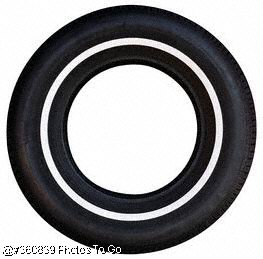|
AUTOBUS ~ MOTORBUS

|
| Above are several hazardous smokestacks. |
AIRED WHEELS
Plural: Busses or Buses.

Bus lifespan is about 15 years. This is mainly due to the motor. [Gas EV:12-15]

Has tires. Concern regarding figuring out what to do with worn items. Tires are made with 2000 chemicals, of which 6PPD-Quinone
is known to kill Coho salmon, and many other fish and other creatures.

When traveling on any driving surface, tires have roll-resistance due to tires using air. When tire hits driving surface,
it squishes, making the vehicle, in this case an autobus, go slower.

Has tires so hydroplanes. Grooves in tires fill up with water, therefore there is a layer of water between the tire and the
road.

Due to roll resistance, buses offer a quite bumpy ride.

Can only carry limited amount of passengers allowed by bus manufacturer and fire marshal laws. There are accordion type of
buses which offer several more seats and more stand handles. There is no ability to attach another bus or trailer to first
bus.

No ability to transport items unless a long distance type of bus that offers storage below on sides of the bus.

Bus Interior: Seating is often cloth or plastic covered with a chair-like look of separation. They wear and tear over time.
The trend is to go to plastic only. Unfortunately, there is no grip to the actual seat veneers. The plastic often makes
riders slip off the seat, making it hazardous, especially when bus not only goes, "Up and Down," but around corners
and emergency brake stops. Double seats also get loose over time.

Seats - Sitting Loss: Seats in the front are meant to lift, in order for only up to 2 wheelchair passengers, so up to 10 seats
are unavailable.

Bus can only go one way. Yes, an autobus can back up, but only for a short time, such as having to turn around, or parking.

Drinks (open containers) spill on floor and seats of buses and becomes sticky.

Boarding time is longer due to stairs or ramp needing to come down for a wheelchair passenger to board, push the seats up,
have the wheelchair bound person turn around, pull brake handles, and place seat belt on.

Uncomfortably Compact: Standing like sardines in a can, with backpacks pressing on each other is mot fun. Certain body parts
are in one's face when one does get to sit down.
HOW MUCH ARE BUSSES?
SCHOOL BUSSES: "In 2021, 22.5% of schools plan to invest in clean diesel buses. In North Carolina, the average Type C bus
retires after 20 years (about 250,000 miles), while the smaller Type A and Type B buses last 14.3 years. With
an average fleet age hovering at 9.2 years, schools usually retire a few buses each year as they reach the end
of their useful life span."
NEW BUSSES: "New buses can cost anywhere from $90,000 to $290,000, depending on the type. Most schools need to apply
for financing and grants to cover their fleet renewal costs. The added investment can be worth the price with lower initial
maintenance costs and longer service life out of every vehicle." - Gregory Poole CAT
- "How Much Does a School Bus Cost?" - Gregory Poole CAT
"Diesel buses are the most common type of bus in the United States, and they cost around $550,000 per vehicle (according to
a 2016 study). Buses powered by natural gas are becoming more popular, and they cost slightly more than diesel-powered vehicles.
Hybrid buses, which combine a gasoline or diesel engine with an electric motor much like a Toyota Prius, are much more expensive
than either natural gas or diesel buses. In 2011, the transit system of Greensboro, North Carolina, spent $714,000 on each
of its hybrid vehicles. Electric buses are the most expensive on the market, costing around $800,000 per
vehicle. Because of their low maintenance and fuel costs, however, they are becoming more common in cities around the
country."
HOW SAFE ARE ELECTRIC BATTERIED BUSSES?
BUS ELECTRIC VEHICLES (EV) BATTERIES
The more powerful batteries, the more vulnerable they are to catching fire. With reducing space between electrodes, more
electrolyte can meet, and, just like gasoline, is flammable.
"Electric Bus Bursts Into Flames, Sets Nearby Vehicles on Fire in China" - South Morning China Post
CALIFORNIA: "Massive Fire at Compton Industrial Complex Rips Through Structures, Buses - TV 7 ABC
"Lithium-ion batteries are extremely volatile and incredibly challenging to put out. These fires burn hotter, they burn longer.
They take more water. It burned very hot. It melted the roadway underneath it. There was nothing even left of the shell
of the vehicle. And little education is out there to help firefighters. ... Massive recalls. The problem is costly. ....
It releases two kinds of contents in the smoke that we need to be aware of: One is Flammable. The other is, 'Toxic.' Just
90% of the gases that were from traction battery ignited, and about 10% of cases, the vapors coming from the traction batteries
actually exploded. And the battery packs can reignite up to several days later."
HOW HEAVY ARE ELECTRIC BATTERIED BUSSES?
"Some city transit buses might need 100 miles/day (160 km/day). Depending upon the chemistry selected, the battery pack
can weigh from 1,100 lbs (500kg) to 2,200 lbs (1,000 kg). So, the eBus weight is estimated from the basic bus chassis
& body (without the ICE components) + the battery pack + electric motor(s) + motor controllers. The short and imprecise answer
is around 40,000 lbs (18,200 kg), very roughly for a large city transit bus with a 100-mile range."
Electric Battery Bus Cost: $750,000 12 Year Lifetime Fuel Costs: $129,600 - $259,200 Lifecycle Cost: $879,600 - $1,009,200
[Battery capacity is only 70 - 80% fully charged]
....................................................................................................................................................................................................................................................
|
